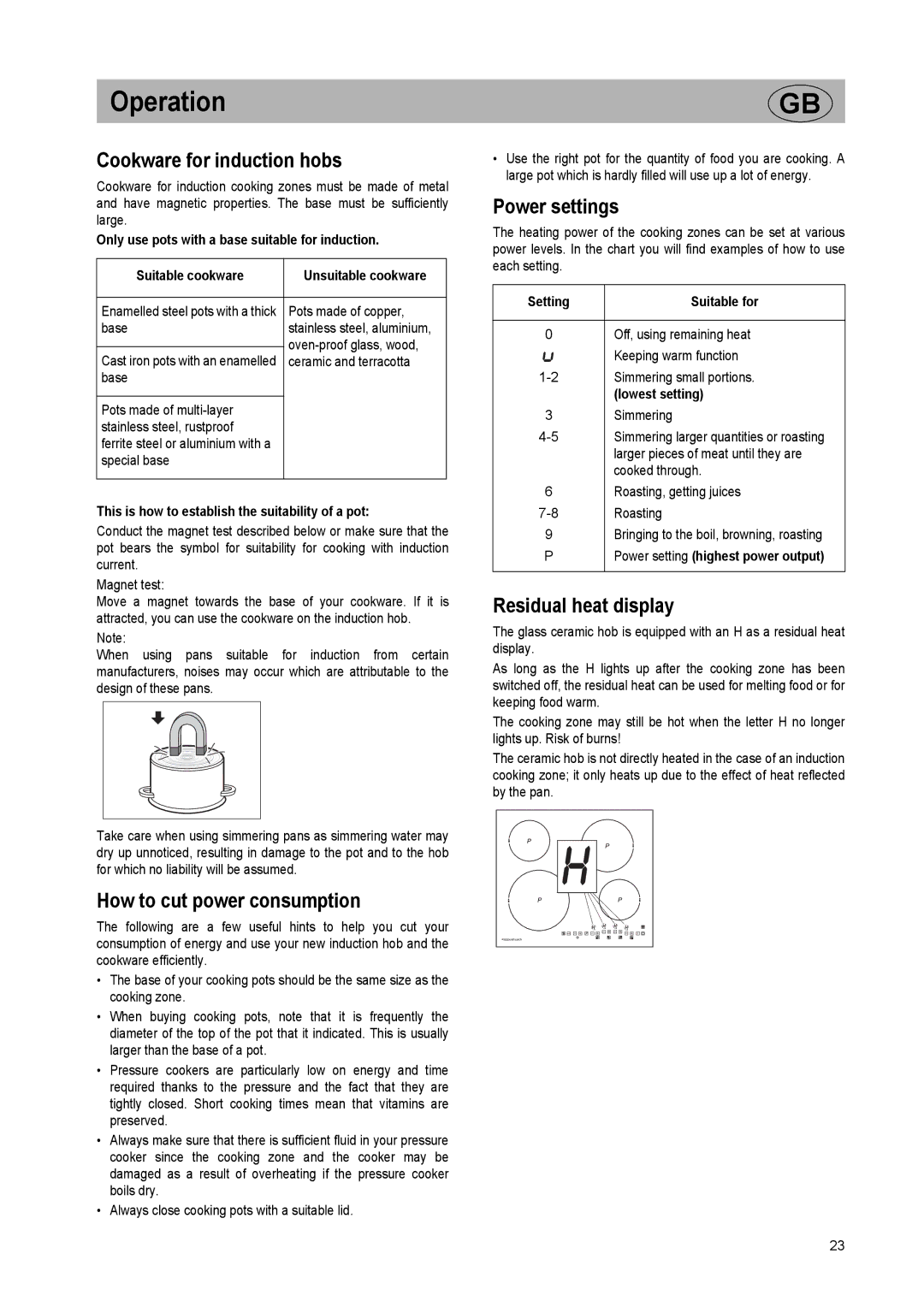EKI 807.2, EKI 848.0, EKI 607.2 specifications
Kuppersbusch USA has established a reputation for high-end kitchen appliances, and their EKI series—specifically the EKI 607.2, EKI 848.0, and EKI 807.2—showcases this legacy of quality and innovation. Each model is designed with precision engineering, offering both functionality and aesthetics for modern kitchens.The EKI 607.2 is a stylish and compact built-in cooking range that marries traditional craftsmanship with contemporary technology. This model features a powerful gas cooktop that provides professional-grade performance. With six burner configurations, including a dual-ring burner, chefs can effortlessly achieve precise temperatures for a variety of dishes. The self-cleaning convection oven is another highlight, ensuring that maintenance remains hassle-free while delivering even heat distribution for perfectly baked goods. Additionally, the digital display and intuitive controls provide ease of use, making meal preparation a seamless experience.
The EKI 848.0 elevates the cooking experience even further with its sophisticated design and advanced features. This model incorporates induction technology, providing rapid heating and heightened energy efficiency. Induction cooking offers the advantage of precise temperature control, allowing users to simmer, sauté, or boil with incredible accuracy. The spacious oven accommodates multiple dishes at once, utilizing a multi-functional cooking system that includes baking, broiling, and roasting capabilities. With features such as a built-in meat probe and programmable timer, home cooks can achieve restaurant-quality results every time.
Lastly, the EKI 807.2 is another standout in the Kuppersbusch lineup, offering reliability and versatility. This model features a variety of cooking options, from traditional gas to modern electric. The oven is equipped with advanced heating technologies, including two convection fans that ensure even cooking results. Furthermore, the stylish touchscreen interface presents a wealth of features that make navigating settings simple. The EKI 807.2 also emphasizes safety, incorporating features such as an automatic shut-off and cooling system, which provides peace of mind during cooking.
Overall, Kuppersbusch USA’s EKI 607.2, EKI 848.0, and EKI 807.2 represent a perfect blend of innovation, style, and functionality. Each model caters to the needs of discerning cooks, ensuring that both amateur chefs and culinary enthusiasts can elevate their kitchen experience with cutting-edge technology and timeless design.

